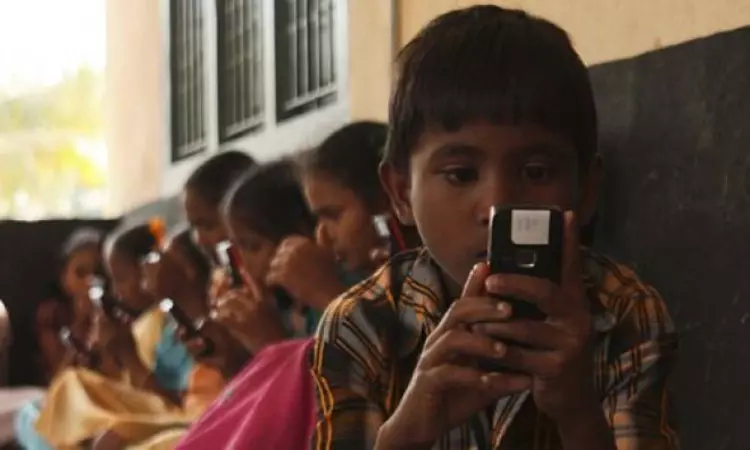School students owning smartphone increased from 36.5% in 2018 to 61.8% in 2020 in Rural India: Economy Survey
The Economic Survey 2020-21, presented by Union Minister for Finance and Corporate Affairs, Nirmala Sitharaman, in the Parliament on Friday stated that online schooling took off in a big way during the COVID-19 pandemic.
By Newsmeter Network
Hyderabad: The Economic Survey 2020-21, presented by Union Minister for Finance and Corporate Affairs, Nirmala Sitharaman, in the Parliament on Friday stated that online schooling took off in a big way during the COVID-19 pandemic. Quoting the Annual Status of Education Report (ASER) 2020 Wave-1 (Rural), released in October 2020, the survey stated that the percentage of enrolled children from government and private schools owning a smartphone increased enormously from 36.5 per cent in 2018 to 61.8 per cent in 2020 in rural India.
The survey recommended that, if utilised well, the resultant reduction in the digital divide between rural and urban, gender, age and income groups is likely to reduce inequalities in educational outcomes.
The government also said that around 92 courses have started and 1.5 crore students were enrolled under Swayam MOOCs which are online courses relating to NIOS. To mitigate the effect of COVID-19, Rs 818.17 crore is allotted to states/UTs to promote online learning through digital initiatives and Rs 267.86 crore for online teacher training under the Samagra Shiksha scheme. PRAGYATA guidelines on digital education have been developed with a focus on online/blended/digital education for students who are presently at home due to closure of schools. The MANODARPAN initiative for psychological support has been included in the Atma Nirbhar Bharat Abhiyan.
The Economic Survey 2020-21 stated that India will have the highest population of young people in the world over the next decade. "Our ability to provide high-quality educational opportunities to them will determine the future of our country. As per U-ISE 2018-19, the physical infrastructure of more than 9.72 lakh government elementary schools has improved significantly. Out of these, 90.2 percent have toilets for girls, 93.7 per cent have toilets for boys, 95.9 per cent have provision for drinking water facility, 82.1 per cent have wash (drinking water, toilet and hand wash) facility, 84.2 per cent have medical check-up facility, 20.7 per cent have computer and 67.4 per cent have electricity connection and 74.2 per cent have ramps among other essential services," the finance minister said while presenting the Economic Survey.
The survey states that India has attained a literacy level of almost 96 per cent at the elementary school level. As per National Sample Survey (NSS), the literacy rate of persons of age seven years and above at all-India level stood at 77.7 per cent. Female literacy remained below national average among social groups of SCs, STs, OBCs, including religious groups of Hinduism and Islam.
Skill Development
The Economic Survey 2020-21 stated that only 2.4 per cent of the workforce of the age 15-59 years have received formal vocational/technical training and another 8.9 per cent of the workforce received training through informal sources. Out of the 8.9 per cent workforce who received non-formal training, the largest chunk is contributed by on-the-job training (3.3 per cent), followed by self-learning (2.5 per cent) and hereditary sources (2.1 per cent) and other sources (1 per cent).
Among those who received formal training, the most opted training course is IT-ITES among both males and females, followed by electrical power and electronics, mechanical engineering, strategic manufacturing, and automotive. Males preferred office and business-related work while preferred courses for females were textiles handloom, apparels, office and business-related work, healthcare and life sciences and work related to childcare, nutrition, pre-school and crèche.